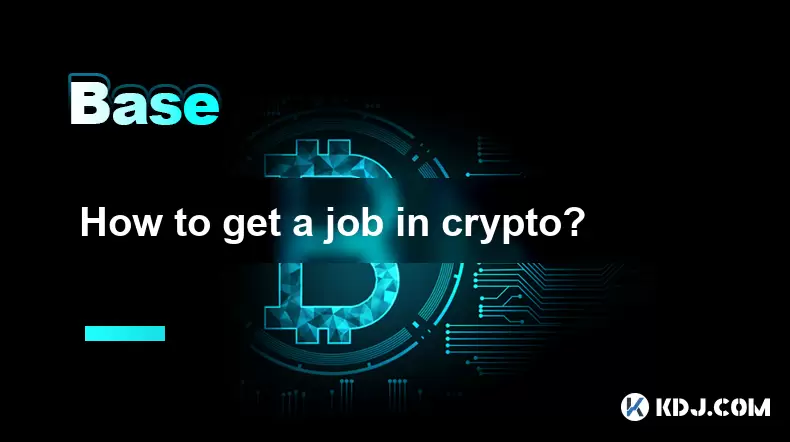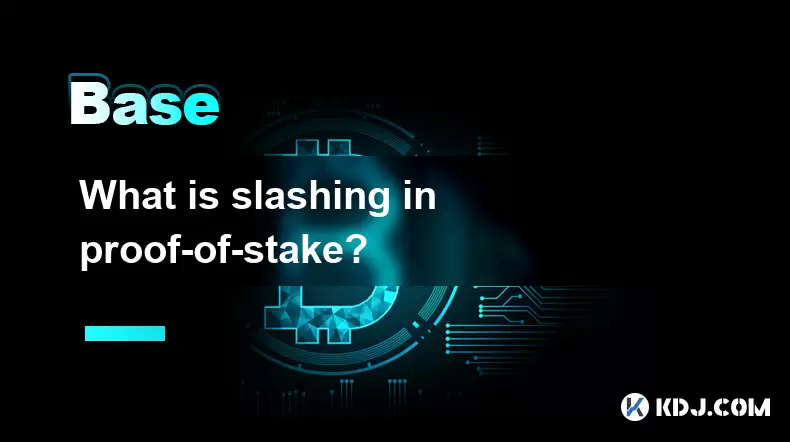-
 Bitcoin
Bitcoin $117900
-0.22% -
 Ethereum
Ethereum $3620
1.45% -
 XRP
XRP $3.392
-1.67% -
 Tether USDt
Tether USDt $1.001
-0.01% -
 BNB
BNB $741.5
1.66% -
 Solana
Solana $177.7
0.35% -
 USDC
USDC $0.9999
0.00% -
 Dogecoin
Dogecoin $0.2524
4.26% -
 TRON
TRON $0.3190
-1.74% -
 Cardano
Cardano $0.8331
1.49% -
 Hyperliquid
Hyperliquid $44.73
-0.94% -
 Stellar
Stellar $0.4609
-0.52% -
 Sui
Sui $3.844
2.54% -
 Chainlink
Chainlink $18.54
2.73% -
 Hedera
Hedera $0.2685
2.60% -
 Bitcoin Cash
Bitcoin Cash $522.6
1.91% -
 Avalanche
Avalanche $24.57
4.49% -
 Shiba Inu
Shiba Inu $0.00001508
2.57% -
 Litecoin
Litecoin $111.2
9.56% -
 UNUS SED LEO
UNUS SED LEO $8.989
0.15% -
 Toncoin
Toncoin $3.185
-0.08% -
 Polkadot
Polkadot $4.391
3.82% -
 Uniswap
Uniswap $10.34
3.56% -
 Monero
Monero $327.3
1.09% -
 Ethena USDe
Ethena USDe $1.001
-0.02% -
 Bitget Token
Bitget Token $4.953
1.19% -
 Pepe
Pepe $0.00001351
2.67% -
 Dai
Dai $1.000
0.01% -
 Aave
Aave $320.9
0.41% -
 Bittensor
Bittensor $415.9
1.00%
What is the "crypto trilemma" of scalability, security, and decentralization?
Blockchain networks face the crypto trilemma—balancing scalability, security, and decentralization—often sacrificing one to improve the others.
Jul 19, 2025 at 06:28 pm

Understanding the Concept of the Crypto Trilemma
The crypto trilemma refers to the challenge of simultaneously achieving scalability, security, and decentralization in blockchain networks. This concept was popularized by Ethereum co-founder Vitalik Buterin, who highlighted that most blockchain systems struggle to optimize all three aspects at the same time. In practice, improving one or two of these elements often comes at the expense of the third. For example, a network can be highly secure and decentralized but suffer from poor transaction throughput and speed, which limits its scalability.
Scalability refers to a blockchain’s ability to handle a growing number of transactions efficiently.
Security means the network is resistant to attacks and fraud, ensuring data integrity and user trust.
Decentralization implies that no single entity controls the network, distributing power across many nodes or participants.
Each of these components is crucial for a blockchain to function effectively in a real-world environment, but achieving a balance among them remains one of the biggest hurdles in the industry.
Why Scalability Matters in Blockchain Networks
Scalability is a critical factor in determining whether a blockchain can support widespread adoption. Traditional financial systems like Visa or Mastercard can process thousands of transactions per second (TPS), while many blockchain networks struggle to reach even a few hundred TPS. This limitation becomes evident during periods of high demand, leading to network congestion and increased transaction fees.
To improve scalability, developers have explored various solutions such as layer-2 protocols, sharding, and off-chain transactions. These approaches aim to reduce the burden on the main blockchain by processing transactions elsewhere and only recording final results on the main chain. However, implementing these solutions often introduces trade-offs that can affect security or decentralization.
For example, some layer-2 scaling solutions require users to trust third-party intermediaries, which can centralize aspects of the system and reduce overall decentralization. Similarly, sharding—a method of splitting the blockchain into smaller segments—can make the network more vulnerable to attacks if not implemented correctly.
Security Challenges in Blockchain Systems
Security is a foundational requirement for any blockchain platform. Without robust security mechanisms, users cannot trust the network to protect their funds and data. However, enhancing security often involves increasing the computational or consensus requirements for nodes, which can reduce scalability and make the network less efficient.
One common approach to improving security is increasing the number of nodes validating transactions. While this enhances decentralization, it also increases the time required to reach consensus, slowing down transaction processing. Additionally, many security enhancements, such as complex cryptographic algorithms, can increase the computational burden on nodes, further reducing scalability.
Another concern is the risk of 51% attacks, where a single entity gains control of the majority of the network’s computational power. To mitigate this, some blockchains implement proof-of-stake (PoS) mechanisms instead of proof-of-work (PoW), which theoretically improves security without requiring massive energy consumption. However, PoS systems can sometimes centralize power among wealthy stakeholders, undermining decentralization.
The Role of Decentralization in Blockchain Design
Decentralization is one of the core principles of blockchain technology, aiming to eliminate reliance on centralized authorities. However, maintaining full decentralization can be technically challenging and often conflicts with the need for scalability and security.
A fully decentralized network requires every node to validate every transaction, which can significantly slow down the system. As a result, many projects opt for a semi-decentralized approach, where certain nodes or validators have more authority than others. While this can improve scalability and security, it reduces the level of decentralization.
Some blockchains use governance tokens to allow users to vote on network upgrades and changes, promoting a more decentralized decision-making process. However, this model can still be influenced by large token holders, potentially centralizing control. Therefore, achieving true decentralization while maintaining high security and scalability remains a complex balancing act.
Examples of Projects Tackling the Crypto Trilemma
Several blockchain projects have attempted to address the crypto trilemma by introducing innovative consensus mechanisms and architectural designs. For instance:
- Ethereum is transitioning from proof-of-work to proof-of-stake with Ethereum 2.0, aiming to enhance scalability and security while preserving decentralization.
- Polkadot uses a sharded architecture with multiple interconnected blockchains, allowing for parallel processing of transactions and improving scalability without compromising security or decentralization.
- Solana prioritizes scalability by using a combination of proof-of-history and tower BFT, enabling high transaction throughput but raising concerns about decentralization due to its reliance on high-performance hardware.
- Cardano employs a peer-reviewed research approach to develop Ouroboros, a proof-of-stake protocol designed to balance all three aspects of the crypto trilemma.
Each of these projects illustrates different strategies for navigating the crypto trilemma, with varying degrees of success depending on the specific use case and network requirements.
Frequently Asked Questions (FAQ)
What is the origin of the crypto trilemma concept?
The crypto trilemma was formally introduced by Ethereum co-founder Vitalik Buterin to describe the difficulty of achieving scalability, security, and decentralization simultaneously in blockchain systems.
Can a blockchain ever fully solve the crypto trilemma?
While many projects claim to address the crypto trilemma, no blockchain has yet achieved perfect balance across all three dimensions. Most solutions involve trade-offs, and the optimal configuration often depends on the specific goals of the network.
How does decentralization affect network performance?
Greater decentralization typically means more nodes must validate each transaction, which can slow down the network and reduce scalability. It also increases the cost of coordination and consensus, making it harder to implement rapid upgrades or changes.
Are layer-2 solutions a viable way to improve scalability?
Layer-2 solutions like the Lightning Network or Optimistic Rollups are effective at improving scalability by processing transactions off-chain. However, they may introduce additional security risks or reduce decentralization if they rely on centralized intermediaries.
Disclaimer:info@kdj.com
The information provided is not trading advice. kdj.com does not assume any responsibility for any investments made based on the information provided in this article. Cryptocurrencies are highly volatile and it is highly recommended that you invest with caution after thorough research!
If you believe that the content used on this website infringes your copyright, please contact us immediately (info@kdj.com) and we will delete it promptly.
- WLFI Token Trading Approved: From Trump Ties to Community Votes
- 2025-07-20 09:10:12
- CoinDCX's $44.2 Million Security Breach: A Wake-Up Call for Crypto Exchanges
- 2025-07-20 08:30:13
- Trump, WLFI, and Token Release: A New York Minute on Crypto
- 2025-07-20 08:30:13
- Ripple's RLUSD: The Bluechip Stablecoin Set to Disrupt the Market?
- 2025-07-20 08:50:11
- Bitcoin Price Action: Is Weakening Demand on the Horizon?
- 2025-07-20 08:50:11
- Ripple's RLUSD: Top-Ranked Stablecoin Shaking Up the Market
- 2025-07-20 08:55:12
Related knowledge

What is the Inter-Blockchain Communication Protocol (IBC)?
Jul 19,2025 at 10:43am
Understanding the Inter-Blockchain Communication Protocol (IBC)The Inter-Blockchain Communication Protocol (IBC) is a cross-chain communication protoc...

How does sharding improve scalability?
Jul 20,2025 at 01:21am
Understanding Sharding in BlockchainSharding is a database partitioning technique that is increasingly being adopted in blockchain technology to enhan...

What is the "crypto trilemma" of scalability, security, and decentralization?
Jul 19,2025 at 06:28pm
Understanding the Concept of the Crypto TrilemmaThe crypto trilemma refers to the challenge of simultaneously achieving scalability, security, and dec...

What is a cliff and vesting schedule in tokenomics?
Jul 20,2025 at 10:28am
What Does a Cliff Mean in Tokenomics?In tokenomics, a cliff refers to a specific period during which token holders are not allowed to access or transf...

How to get a job in crypto?
Jul 20,2025 at 08:14am
Understanding the Crypto Industry LandscapeThe cryptocurrency industry is a rapidly evolving space that includes blockchain technology, decentralized ...

What is slashing in proof-of-stake?
Jul 20,2025 at 06:07am
Understanding Slashing in Proof-of-StakeIn a Proof-of-Stake (PoS) blockchain network, slashing refers to the penalty mechanism used to deter validator...

What is the Inter-Blockchain Communication Protocol (IBC)?
Jul 19,2025 at 10:43am
Understanding the Inter-Blockchain Communication Protocol (IBC)The Inter-Blockchain Communication Protocol (IBC) is a cross-chain communication protoc...

How does sharding improve scalability?
Jul 20,2025 at 01:21am
Understanding Sharding in BlockchainSharding is a database partitioning technique that is increasingly being adopted in blockchain technology to enhan...

What is the "crypto trilemma" of scalability, security, and decentralization?
Jul 19,2025 at 06:28pm
Understanding the Concept of the Crypto TrilemmaThe crypto trilemma refers to the challenge of simultaneously achieving scalability, security, and dec...

What is a cliff and vesting schedule in tokenomics?
Jul 20,2025 at 10:28am
What Does a Cliff Mean in Tokenomics?In tokenomics, a cliff refers to a specific period during which token holders are not allowed to access or transf...

How to get a job in crypto?
Jul 20,2025 at 08:14am
Understanding the Crypto Industry LandscapeThe cryptocurrency industry is a rapidly evolving space that includes blockchain technology, decentralized ...

What is slashing in proof-of-stake?
Jul 20,2025 at 06:07am
Understanding Slashing in Proof-of-StakeIn a Proof-of-Stake (PoS) blockchain network, slashing refers to the penalty mechanism used to deter validator...
See all articles

























































































